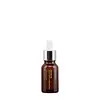What's inside
What's inside
 Key Ingredients
Key Ingredients

 Benefits
Benefits

 Ingredients Side-by-side
Ingredients Side-by-side

Water
Skin ConditioningPropanediol
SolventAscorbic Acid 15%
Antioxidant1,2-Hexanediol
Skin Conditioning3-O-Ethyl Ascorbic Acid
Skin ConditioningGlutathione
Phellodendron Amurense Bark Extract
Skin ConditioningPanthenol
Skin ConditioningResveratrol
AntioxidantCitrus Junos Seed Extract
AntioxidantBeta-Glucan
Skin ConditioningAdenosine
Skin ConditioningCamellia Japonica Flower Extract
EmollientCimicifuga Racemosa Root Extract
AntimicrobialSilybum Marianum Extract
Skin ConditioningFerulic Acid 0.5%
AntimicrobialSodium Citrate
BufferingOctyldodeceth-16
EmulsifyingTocopherol 0.1%
AntioxidantFullerenes
AntimicrobialSodium Sulfate
Cellulose Gum
Emulsion StabilisingGlycerin
HumectantBenzophenone-9
UV AbsorberButylene Glycol
HumectantPvp
Emulsion StabilisingEthylhexylglycerin
Skin ConditioningWater, Propanediol, Ascorbic Acid 15%, 1,2-Hexanediol, 3-O-Ethyl Ascorbic Acid, Glutathione, Phellodendron Amurense Bark Extract, Panthenol, Resveratrol, Citrus Junos Seed Extract, Beta-Glucan, Adenosine, Camellia Japonica Flower Extract, Cimicifuga Racemosa Root Extract, Silybum Marianum Extract, Ferulic Acid 0.5%, Sodium Citrate, Octyldodeceth-16, Tocopherol 0.1%, Fullerenes, Sodium Sulfate, Cellulose Gum, Glycerin, Benzophenone-9, Butylene Glycol, Pvp, Ethylhexylglycerin
Propanediol
SolventAloe Barbadensis Leaf Extract
EmollientAscorbic Acid
AntioxidantArbutin
Antioxidant1,2-Hexanediol
Skin ConditioningArginine
MaskingSodium Hyaluronate
HumectantPanthenol
Skin ConditioningSodium Hydroxide
BufferingCamellia Sinensis Leaf Extract
AntimicrobialMomordica Charantia Fruit Extract
Skin ConditioningSambucus Nigra Flower Extract
RefreshingLeontopodium Alpinum Extract
Skin ConditioningDisodium EDTA
 Reviews
Reviews

Ingredients Explained
These ingredients are found in both products.
Ingredients higher up in an ingredient list are typically present in a larger amount.
1,2-Hexanediol is a synthetic liquid and another multi-functional powerhouse.
It is a:
- Humectant, drawing moisture into the skin
- Emollient, helping to soften skin
- Solvent, dispersing and stabilizing formulas
- Preservative booster, enhancing the antimicrobial activity of other preservatives
Ascorbic Acid is is pure Vitamin C. This form makes up the largest amount of vitamin C found naturally in our skin.
Not only is vitamin C great for your overall health and immune system, it also has plenty of benefits on your skin.
Vitamin C is best used for brightening skin. It improves dark spots, acne scars, and hyperpigmentation. This is because it blocks the process of skin darkening when exposed to UV.
Remember: Vitamin C should not replace sunscreen!
Your skin uses vitamin C to build collagen. Collagen is one key component in having a strong skin barrier and plump skin. Vitamin C also plays a role in regulating collagen, thus making it effective in improving wrinkles and fine lines.
Ascorbic acid shows potent antioxidant activity. As an antioxidant, it helps fight free-radicals. Free-radicals are molecules that may damage your skin cells. These antioxidants also protect skin against UV damage.
The best formulations include Vitamin E and/or ferulic acid. These two ingredients help stabilize and provide a boost in the benefits of ascorbic acid. This is because ascorbic acid becomes unstable when exposed to UV and air. In fact, you can tell your ascorbic acid has oxidized when it turns an orange-yellow color.
Ascorbic acid is generally compatible with other ingredients. However, using ascorbic acid with other active ingredients might cause irritation. Two ingredients: copper ions and benzoyl peroxide, will inactivate ascorbic acid completely.
Read more about other types of Vitamin C:
Foods rich with vitamin C include oranges, strawberries, broccoli, bell peppers, and more. When consuming Vitamin C, your skin receives a portion of the nutrients.
Learn more about Ascorbic AcidPanthenol is a common ingredient that helps hydrate and soothe the skin. It is found naturally in our skin and hair.
There are two forms of panthenol: D and L.
D-panthenol is also known as dexpanthenol. Most cosmetics use dexpanthenol or a mixture of D and L-panthenol.
Panthenol is famous due to its ability to go deeper into the skin's layers. Using this ingredient has numerous pros (and no cons):
Like hyaluronic acid, panthenol is a humectant. Humectants are able to bind and hold large amounts of water to keep skin hydrated.
This ingredient works well for wound healing. It works by increasing tissue in the wound and helps close open wounds.
Once oxidized, panthenol converts to pantothenic acid. Panthothenic acid is found in all living cells.
This ingredient is also referred to as pro-vitamin B5.
Learn more about PanthenolPropanediol is an all-star ingredient. It softens, hydrates, and smooths the skin.
It’s often used to:
Propanediol is not likely to cause sensitivity and considered safe to use. It is derived from corn or petroleum with a clear color and no scent.
Learn more about Propanediol